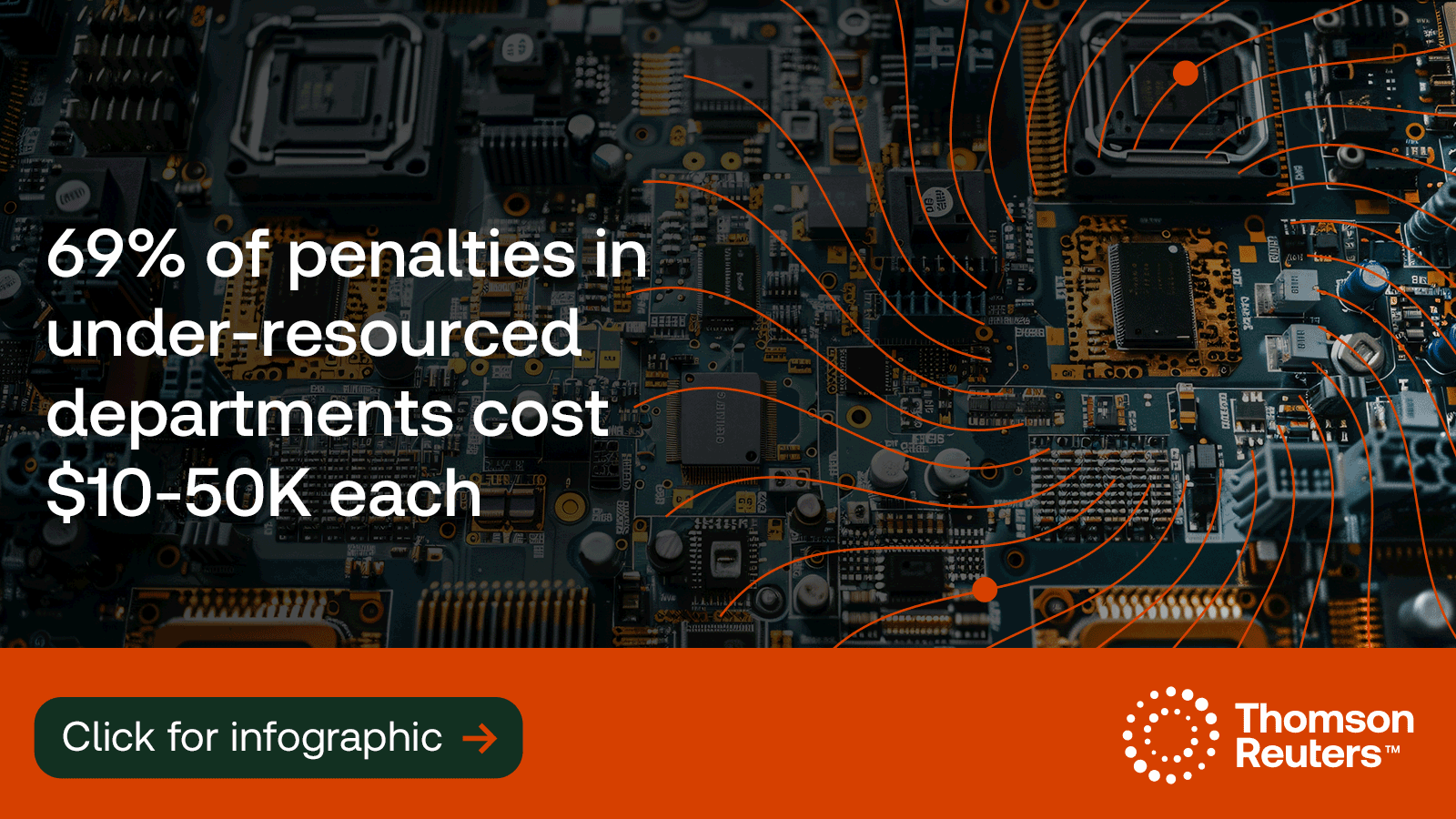In business, “agility” isn’t just about speed and flexibility—it’s about developing and maintaining a proactive, responsive approach to the management of mission-critical elements to a company’s success. Without it, companies and departments struggle, sclerosis sets in, and adapting to change becomes increasingly difficult.
For indirect tax (IDT) teams, a lack of agility typically manifests as an increasingly frustrating awareness that the inefficient methods and processes of the past are no longer sufficient to meet the demands of the future. But to develop agility, one first needs to identify the warning signs that departmental atrophy has set in.
Fortunately, the challenge of creating a more agile IDT department also presents numerous opportunities to improve—and even transform—how the department functions and the value it brings to the enterprise.
Following are five signs or “red flags” that your IDT department is in dire need of an agility makeover:
Jump to ↓
Sign 1: The IDT department is behind the curve or stuck in the early stages of technology adoption
Sign 2: Absence of a clear Artificial Intelligence (AI) strategy
Sign 3: Lack of clear policies and training around GenAI usage
Sign 4: New technology is not an investment priority
Sign 5: Lack of metrics to measure the success of technology implementations
Becoming an agile tax department
Sign 1: The IDT department is behind the curve or stuck in the early stages of technology adoption
According to the Thomson Reuters 2025 Corporate Tax Technology Report, more than half of corporate tax departments are in the “chaotic” or “reactive” stage of their technology development, placing them significantly behind the curve in terms of technology adoption.
If your department is still relying on systems that require manual updates, not investing in new technology, and neglecting the staff training and development necessary to keep pace with the increasing speed, volume, and pressure of today’s corporate tax environment, these are clear signs that an agility makeover is necessary.
Agility makeover: How your department proceeds will depend upon how far along the larger enterprise is on its technological journey. Having the proper technological infrastructure in place is the key to taking full advantage of the benefits of emerging tax technologies, so start there. Identify areas where the department is lacking technologically and formulate a technology roadmap that clearly articulates where the department needs to go and how to get there. Wherever your department is on this journey, start by taking the next step forward, whatever that may be.
Sign 2: Absence of a clear Artificial Intelligence (AI) strategy
Regardless of your department’s technology profile, a clearly defined strategy for incorporating AI into the mix is a must. If your IDT department is still juggling manual tax processes and incorporating new technologies in a piecemeal, ad-hoc manner, with no clear implementation strategy, it is time to re-think the department’s approach to AI. Reluctant adoption of new technologies is not a winning formula; it is a recipe for continued frustration and eventual failure.
Agility makeover: To develop a coherent AI strategy, first conduct a needs assessment to identify how AI enhancements can best serve the department and the larger enterprise. Look for efficiency bottlenecks, work backups, compliance lapses, and manual operations that need to be automated—then determine how AI can address them. Data reconciliation, tax compliance, risk mitigation, and research are good places to start. Whatever strategy emerges, make sure it aligns with and supports the enterprise’s broader technology strategy and initiatives.
 |
|
Sign 3: Lack of clear policies and training around GenAI usage
Even as machine-learning AI and automation continue to transform corporate tax policy and procedures, the next evolution of AI—Generative AI (GenAI)—is quickly establishing itself as a revolutionary force that must also be reckoned with. And yet, according to the 2025 Thomson Reuters GenAI in Professional Services report, more than half of professionals (52%) say their organizations have not developed policies governing GenAI at work.
If your tax department has yet to develop policies and training for GenAI usage, it’s time to explore how GenAI can (and can’t) be used to improve risk management and compliance.
Agility makeover: In a corporate tax environment, GenAI can streamline compliance, reduce errors, identify risks, and extract business intelligence from much larger datasets than conventional AI. Some areas of exploration to consider are:
- Automated data extraction and validation
- Compliance and tax controversy risk mitigation
- Tax law and real-time regulatory monitoring
- Predictive analytics and scenario modeling
- Tax document management and summaries
GenAI usage policies should also recognize that human oversight of GenAI is essential to ensure that the results and usage of the technology are both accurate and ethical. Therefore, training in GenAI usage and oversight is a must.
Sign 4: New technology is not an investment priority
Many corporate tax departments are constrained by tight budgets, limited resources, and various structural and leadership impediments that prevent them from implementing much-needed new technologies. If this situation sounds familiar, it’s time to develop a more proactive technology strategy.
Agility makeover: An uncomfortable fact of life in many organizations is that approval and buy-in from the top is required for any significant change to happen. To gain that approval, put together a pitch that emphasizes the benefits of new technology as well as the risks of NOT embracing technological change.
You know the benefits. The risks include escalating compliance costs, snowballing inefficiencies, overwhelming workloads, fewer available resources, and failure to keep up with competitors. Delaying new technology adoption also tends to make the inevitable transition more expensive and disruptive in the future.
Sign 5: Lack of metrics to measure the success of technology implementations
According to the 2025 Corporate Tax Technology Report, nearly three-quarters (73%) of corporate tax departments do not track technology metrics such as usage rates, satisfaction, or return on investment (ROI). Failing to measure these outcomes makes it difficult to assess the effectiveness of technology investments and hinders attempts to improve or upgrade existing technological resources.
Agility makeover: Some technological metrics are easier to track than others, but the most important ones are:
- Efficiency: time saved on reduction of manual tasks, compliance, reporting, reconciliation, etc.
- Data quality and accuracy: reduction in error rates, discrepancies, audits, etc.
- Risk reduction: fewer penalties, compliance issues, and tax controversies
- ROI and cost savings: operational cost reductions and time to recoup investment
- Strategic value: contributions to business intelligence via predictive analytics
Tracking and measuring these metrics will give your department the hard data it needs to justify additional technological investments.
Becoming an agile tax department
It is important to recognize that the above warning signs are not simply operational issues; they are troubling indications that your tax department is not functioning as well as it should and may be sliding into irrelevance.
The role of an agile tax department isn’t just compliance; rather, the tax function should contribute added value and strategic intelligence to the larger enterprise in multiple ways, starting with enhanced operational efficiency and advanced tax strategies. But it all starts with an honest self-assessment of what is currently working and what isn’t—then taking the steps necessary for positive change.
To learn more about the importance and benefits of best-in-class tax solutions, visit Thomson Reuters ONESOURCE resources page.

